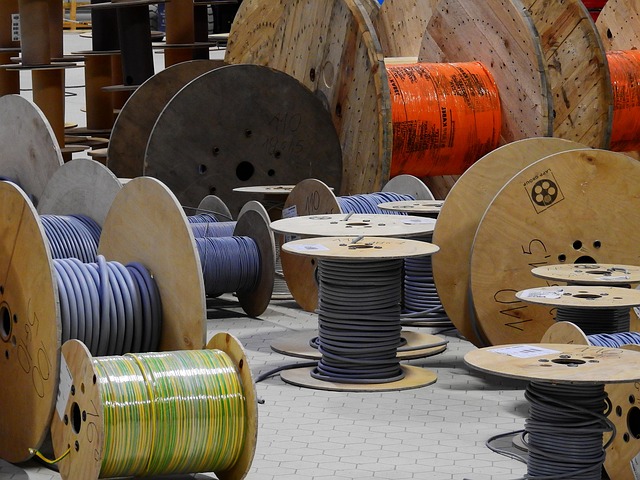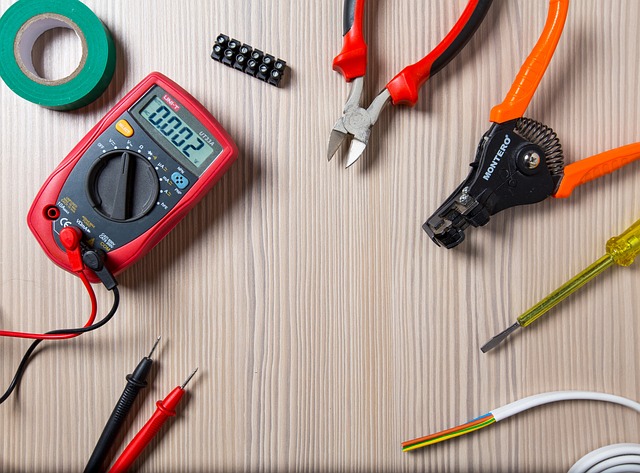Modern circuit breakers offer superior protection over outdated fuses, allowing for easier reset functionality, adjustable amperage settings, and better fault detection. Electricians recommend replacing old fuse boxes with these advanced circuit breakers for enhanced safety and efficiency in managing diverse power demands. The process involves turning off power at the main panel, removing old fuses, installing new circuit breakers, and testing their functionality while adhering to strict safety protocols.
Looking to upgrade your home’s electrical system? It’s time to consider replacing old fuses with modern circuit breakers. This guide delves into the understanding of traditional fuses, their limitations, and the advantages of contemporary circuit breakers. Learn about different types suitable for various applications and essential safety precautions for electricians during the switch. Discover why this simple update is a game-changer for your home’s electrical safety and efficiency.
- Understanding Old Fuses and Their Limitations
- The Advantages of Modern Circuit Breakers
- Steps to Replace Fuses with Circuit Breakers
- Common Types of Circuit Breakers and Their Applications
- Safety Precautions for Electricians During the Switch
Understanding Old Fuses and Their Limitations

Old fuses, once a standard safety feature in electrical systems, have significant limitations that modern circuit breakers easily surpass. An electrician will tell you that fuses are essentially one-time-use protection devices. When they blow, they need to be replaced entirely, often requiring specific knowledge and tools for proper installation. In contrast, circuit breakers are more versatile and can be reset multiple times after tripping, making them a far safer and more convenient option.
Moreover, while fuses have fixed amperage ratings, circuit breakers offer adjustable settings, allowing for greater flexibility in managing electrical loads. This adaptability is crucial for today’s diverse power demands, ensuring that homes and businesses remain protected even with varying appliance usage.
The Advantages of Modern Circuit Breakers

Modern circuit breakers offer a significant upgrade over traditional fuses for several reasons, making them a preferred choice for electricians and homeowners alike. One of the key advantages is their ability to provide better protection against electrical faults. Circuit breakers can detect excessive current flow or short circuits more efficiently, tripping to interrupt power supply instantly, thus preventing potential fires or other hazards caused by overloading.
Unlike fuses that require replacement after they blow, circuit breakers are designed for frequent use and can be reset by simply flipping a switch. This not only saves time and money but also allows for quick restoration of power during minor glitches. Additionally, modern circuit breakers come with advanced features like overload protection and short-circuit protection, ensuring a safer and more reliable electrical system.
Steps to Replace Fuses with Circuit Breakers

Replacing old fuses with modern circuit breakers is a straightforward process that any qualified electrician can handle. Start by turning off the power to the circuit at the main electrical panel. This ensures safety during the replacement process. Next, locate and remove the old fuse, being careful not to drop or damage it. Once the old fuse is removed, insert the new circuit breaker, ensuring it fits properly into the designated slot.
Finally, tighten the circuit breaker securely in place using a screwdriver. Always double-check that the power is still off before testing the new circuit breaker by flipping the switch to ensure it trips when needed and functions correctly.
Common Types of Circuit Breakers and Their Applications

Electricians often come across situations where replacing old fuses with modern circuit breakers is necessary for improved electrical safety and system efficiency. Understanding common types of circuit breakers and their applications is key in these scenarios.
Some of the most prevalent circuit breaker types include magnetic, thermal, and combination (magnetic-thermal) models. Magnetic circuit breakers are commonly used for low voltage applications due to their ability to trip quickly and reliably. Thermal circuit breakers, on the other hand, are suitable for high current situations as they rely on temperature sensors to detect overloads. The combination type offers a blend of these features, making it versatile for various electrical needs. These modern alternatives offer enhanced protection against power surges, short circuits, and overloading, replacing the limited functionality of traditional fuses.
Safety Precautions for Electricians During the Switch

When an electrician undertakes the task of replacing old fuses with modern circuit breakers, safety should be the top priority. Before beginning any electrical work, it’s crucial for electricians to ensure they’re working safely and responsibly. This involves turning off the power supply at the main electrical panel to prevent accidental shocks or fires. Protective gear, including gloves, goggles, and insulated clothing, must be worn to safeguard against potential hazards. Additionally, a clear and well-lit workspace is essential to avoid tripping over tools or wires.
Furthermore, it’s vital for electricians to familiarize themselves with the specifications of the new circuit breakers to ensure compatibility and proper installation. Regularly checking and updating safety protocols, as well as staying informed about industry standards, can help guarantee a seamless transition that prioritizes both efficiency and worker protection.
Upgrading from old fuses to modern circuit breakers is a smart move for any electrician. By understanding the limitations of traditional fuses and leveraging the advantages of contemporary circuit breakers, professionals can enhance electrical systems’ safety, efficiency, and reliability. Following the outlined steps and choosing the right types for specific applications ensures a smooth transition. Remember, proper safety precautions are paramount when handling electricity, so always prioritize safety during the switch.
